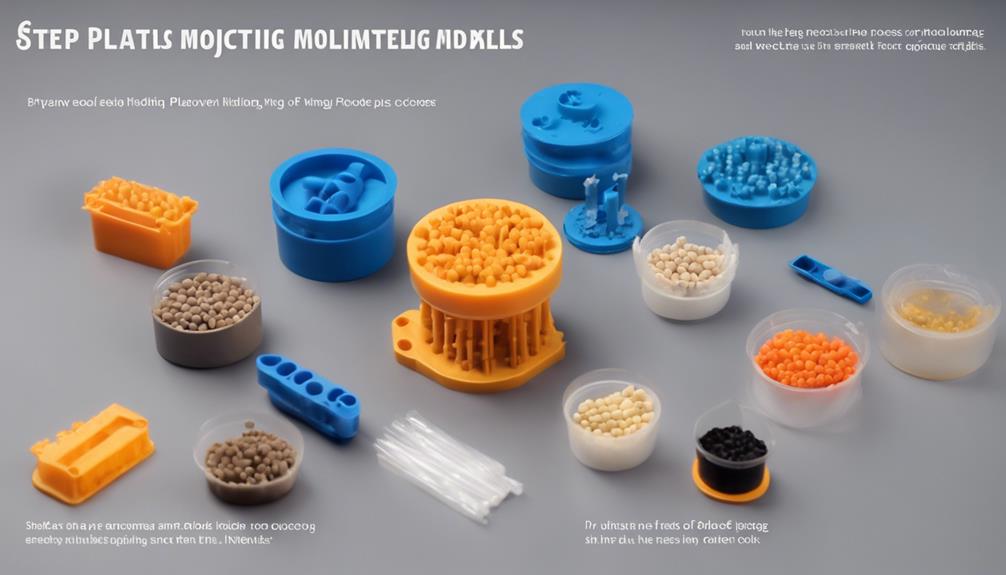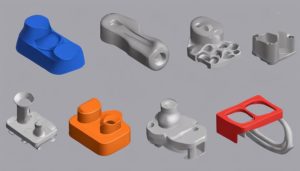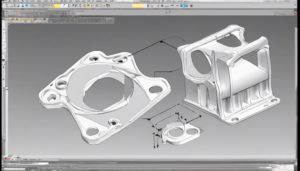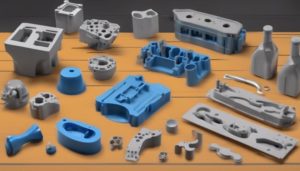Injection plastic molding involves exploring the depths of molten plastic into molds to create precise parts efficiently. The process uses resin pellets melted in a heated barrel, with material selection impacting final product characteristics. Variables like temperature and pressure regulation are crucial for successful molding. Understanding the interaction between materials, mold, and process is essential. Different machines offer unique advantages, from horizontal for ease of loading to vertical for overmolding. Design principles, resin selection, and polishing techniques play crucial roles in achieving quality parts. Explore the intricacies of injection plastic molding to uncover its intricate nuances and vast applications.
Plastic Injection Molding Basics
In the domain of manufacturing, Plastic Injection Molding Basics constitute the fundamental principles governing the precise fabrication of plastic components through the injection of molten plastic into specialized molds. This intricate process involves the use of plastic resin pellets that are melted in a heated barrel before being injected into a mold cavity, where they cool and solidify to form the desired shape.
The material used in plastic injection molding plays an important role in determining the final product's characteristics, such as strength, flexibility, and appearance. The cavity of the mold is a vital element as it defines the shape and features of the plastic part being produced.
An essential aspect of the injection molding process is the regulation of temperature and pressure to ensure efficient material flow and mold filling. Understanding the intricacies of plastic injection molding basics is foundational for achieving high-quality and precise plastic components in manufacturing operations.
Understanding Injection Molding Process
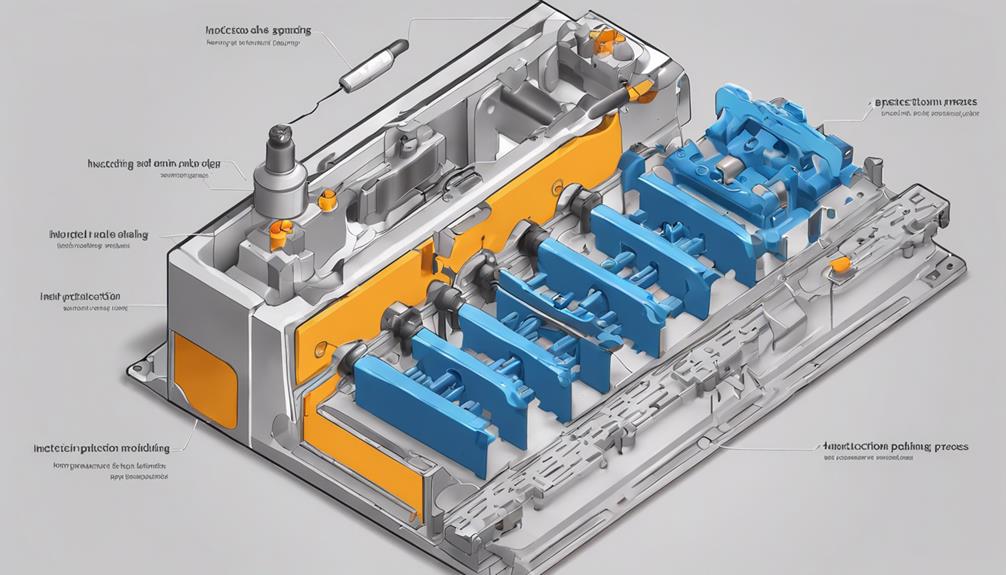
The comprehension of the injection molding process is essential for ensuring efficient and precise fabrication of plastic components in manufacturing operations. The plastic injection molding process involves injecting molten plastic into a mold cavity at high pressure. The molten plastic then cools and solidifies inside the mold, taking the shape of the mold cavity to form the desired part. This highly automated process is widely used for mass production due to its ability to produce intricate designs with high accuracy and repeatability. After injection, the cooling and ejection steps follow to release the finished product from the mold. Understanding the interaction between injection molding materials, the mold, and the process itself is crucial for achieving optimal results in plastic component manufacturing.
| Aspect | Description |
|---|---|
| Injection Molding Materials | Raw materials used for creating the molten plastic for injection molding. |
| Mold | The tooling that shapes and cools the molten plastic into the desired part. |
| Part | The final product resulting from the injection of molten plastic into the mold. |
Types of Injection Molding Machines
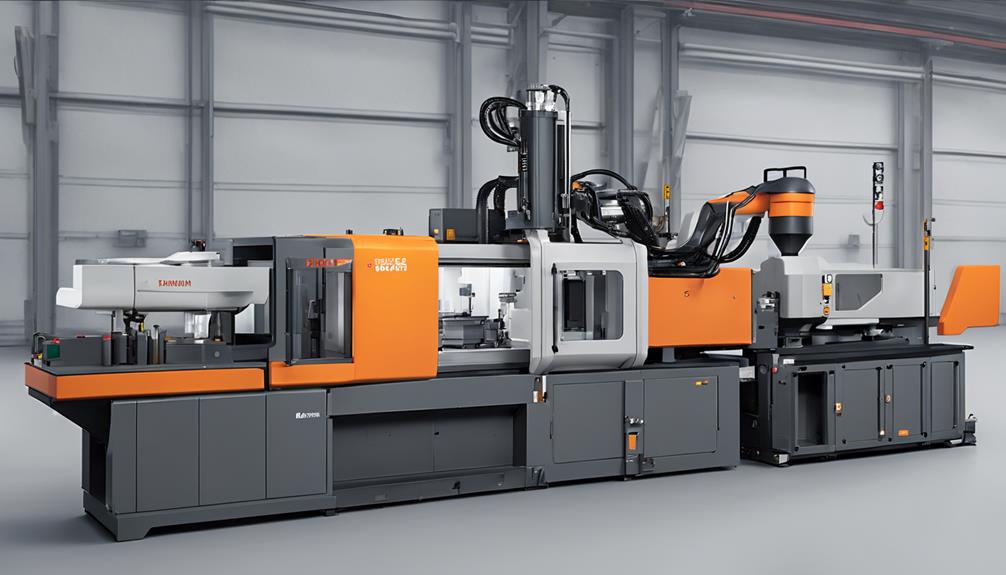
Understanding the various types of injection molding machines is fundamental in optimizing manufacturing processes for plastic component fabrication. Injection molding machines are categorized by Press Tonnage, specifying the force needed to keep the mold closed during injection.
Here are the key types of injection molding machines:
- Horizontal Machines: These machines open and close horizontally, offering advantages such as easier automated loading and unloading and facilitating integration into production lines.
- Vertical Machines: Vertical machines operate with a vertical motion, making them suitable for overmolding applications where multiple materials are combined. They are also space-efficient and can accommodate inserts easily.
- Robotics and Automation Integration: Robotics and automation integration in injection molding machines enhance part consistency, quality, and reduce labor costs. Full automation systems can cover finishing, assembly, and packaging processes, optimizing overall production efficiency. Horizontal machines are commonly used in the industry, while vertical machines are preferred for specific applications like overmolding.
Design Principles for Injection Molding
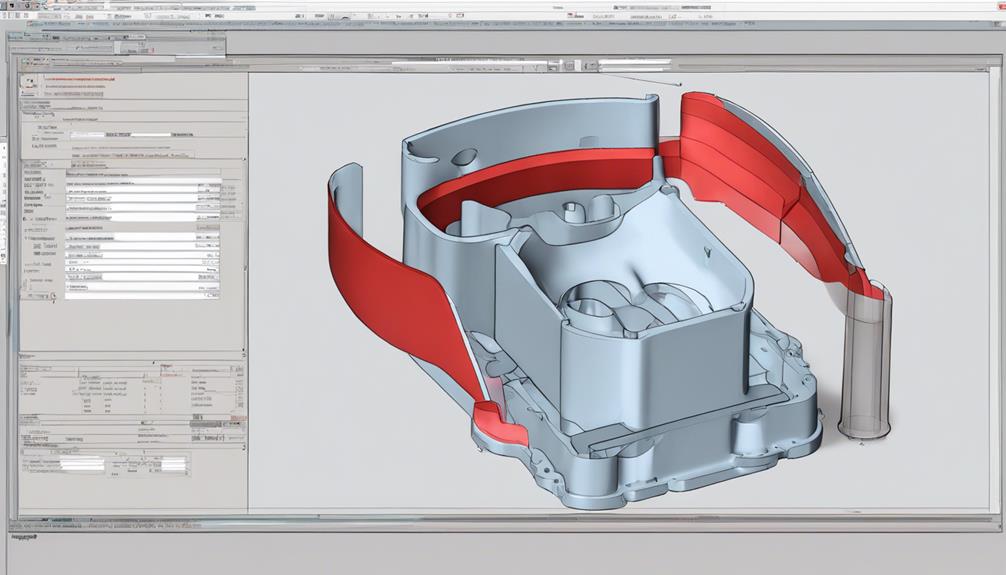
Design principles for injection molding involve critical considerations such as key design factors and material compatibility aspects that play a significant role in the successful production of high-quality parts.
These factors encompass elements like tolerances, wall thickness distribution, core geometry, and draft angles, all of which are essential for optimizing part quality and ensuring efficient manufacturing processes.
Understanding and implementing these design principles are fundamental to achieving precise, cost-effective, and defect-free injection molded components.
Key Design Factors
Core geometry in injection molding is a pivotal aspect that significantly influences part integrity, cooling efficiency, and material flow dynamics during the injection process. When designing for injection molding, key factors to take into account include:
- Tolerances: Ensuring precision with tolerances around +/- 0.005 inches is vital for high-quality manufacturing.
- Wall Thickness: Maintaining uniform wall thickness helps prevent issues such as sink marks or warping in the final product.
- Draft Angles: Incorporating draft angles in designs is essential for facilitating easy part ejection from the mold and reducing the risk of damage or defects.
These design principles are fundamental to optimizing the production process and ensuring the quality of the final injection-molded parts.
Material Compatibility Aspects
Material compatibility is crucial for successful injection molding processes. It directly impacts the quality and characteristics of the final products. Factors like resin type, additives, and colorants need careful evaluation. Understanding material properties such as melt flow index and shrinkage rates is essential for mold design and material selection.
Different materials like ABS, polypropylene, and polycarbonate have specific molding requirements affecting part design and production. Material selection significantly influences part performance, aesthetics, and durability under molding conditions. Proper material compatibility ensures efficient production, minimal defects, and excellent part quality in injection molding processes.
Injection Molding Resins and Additives
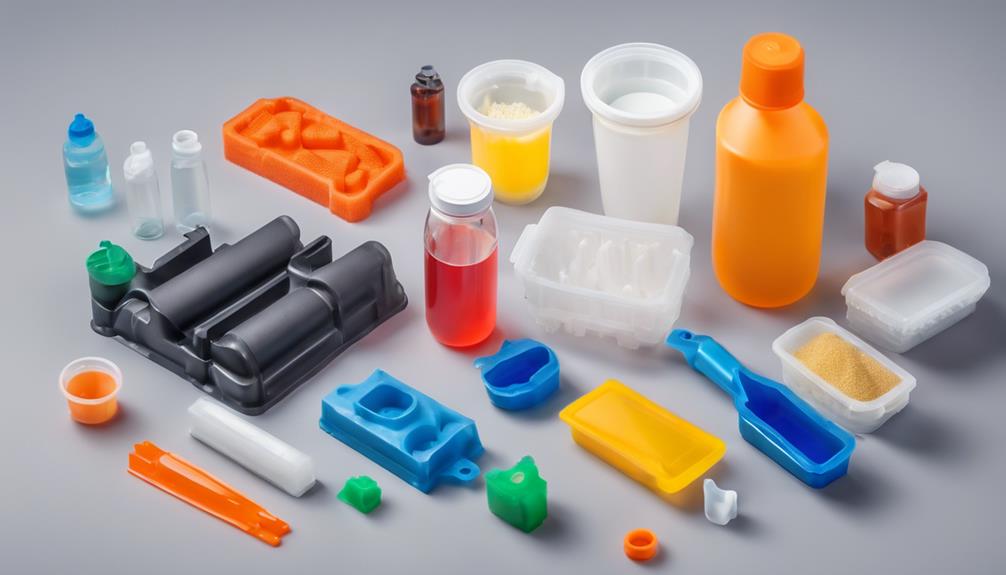
In the field of injection molding, the selection of appropriate resins and additives holds paramount importance in determining the ultimate quality and functionality of the manufactured parts. When considering resin selection and the incorporation of additives, the following aspects should be taken into account:
- Resins: Commonly used resins in injection molding include ABS, polycarbonate, polypropylene, and nylon, chosen for their diverse properties suited for various applications.
- Additives: Colorants, UV stabilizers, and fillers are additives that can be blended with resins to enhance performance, improve appearance, and add functionality to the final product.
- Properties and Performance: Resin selection plays a critical role in achieving desired part characteristics such as strength, flexibility, heat resistance, and chemical compatibility. Specialty additives like glass fibers, mineral fillers, and impact modifiers can further enhance material properties like stiffness, impact resistance, and dimensional stability.
Understanding the interplay between different resins and additives is essential for optimizing part quality, performance, and production efficiency in injection molding processes.
Achieving Surface Finishes in Molding
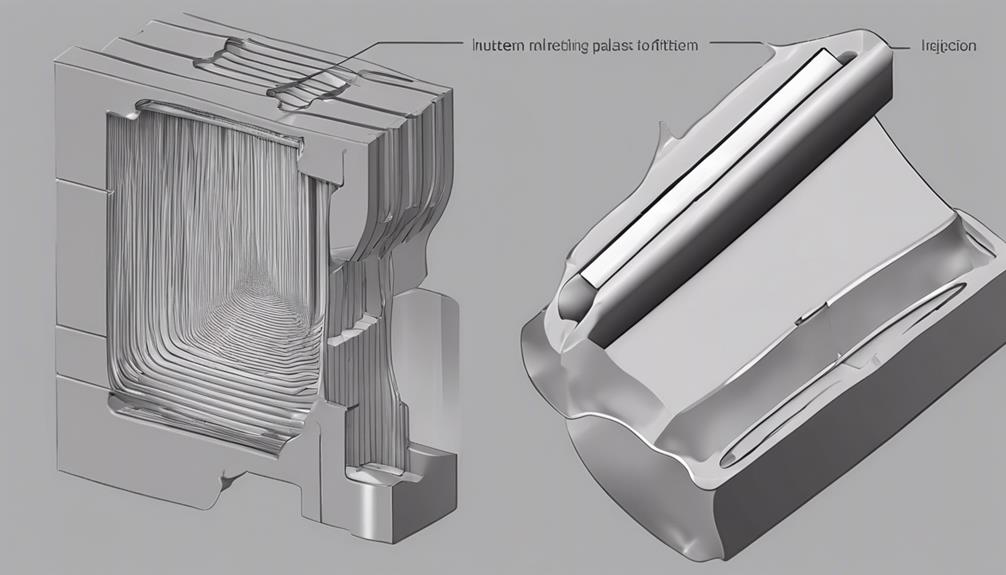
When considering achieving different surface finishes in molding, aspects such as glossy versus matte finishes and the application of various polishing techniques play an important role.
These factors not only impact the aesthetics of the final product but also influence its functionality and durability.
Understanding how to manipulate surface finishes through polishing methods can greatly enhance the quality and appeal of injection molded parts.
Glossy Vs Matte
To distinguish between glossy and matte surface finishes in injection molding, the choice of mold texture and resin smoothness plays a pivotal role in achieving the desired aesthetic outcome. When aiming for glossy finishes, polished molds and smooth resins are essential, while matte finishes are best achieved with textured molds and matte resins.
Additionally, the use of different colorants and resin additives can greatly impact the final surface finish of molded parts, altering glossiness and texture. Design considerations such as draft angles and part geometry are vital in ensuring the desired surface finish for injection molded products.
Surface finishes not only enhance the visual appeal of the final product but also affect functional aspects like grip, friction, and wear resistance.
Polishing Techniques
For ideal surface finishes in injection molding, mastering effective polishing techniques is essential, encompassing methods such as diamond polishing, sanding, and buffing to achieve desired levels of smoothness and glossiness. Polishing involves using various grits, ranging from coarse to fine, to eliminate imperfections and enhance the appearance of molded parts.
Whether done manually or through automated methods, polishing plays a vital role in achieving mirror finishes by meticulously removing defects and blemishes. Automated polishing methods offer consistent results and increased efficiency, especially beneficial for mass production.
Different polishing compounds and tools are selected based on the mold material and desired finish, providing flexibility to attain specific surface textures and shine levels.
Quality Systems in Injection Molding
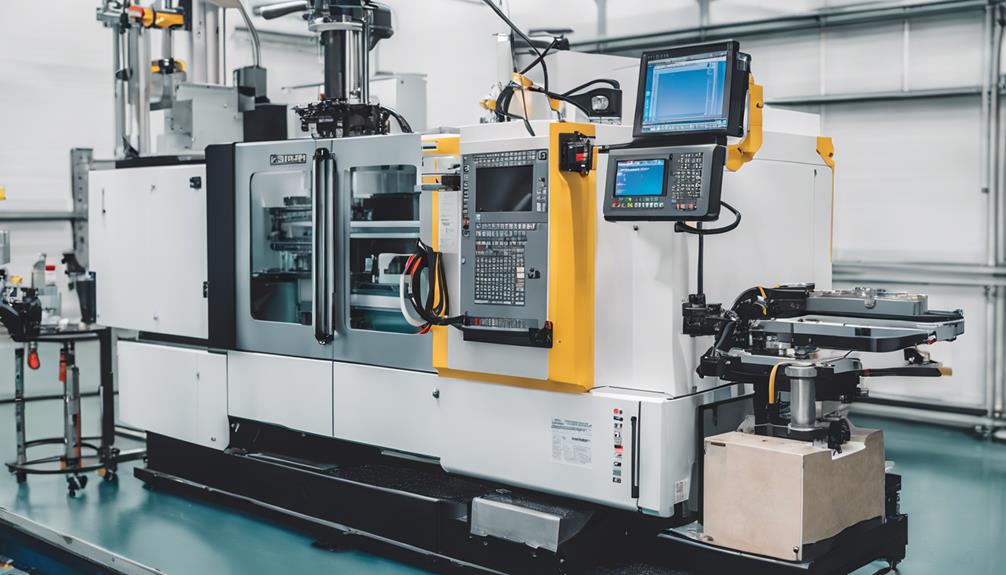
Quality systems in injection molding play a pivotal role in ensuring the consistency and reliability of mass production processes. Implementing quality control systems is essential for maintaining the integrity of the manufacturing process.
Here are three key aspects to contemplate:
- Scientific Molding Techniques: Utilizing scientific molding techniques helps in standardizing processes and optimizing part quality. By applying data-driven methods, manufacturers can achieve higher precision and repeatability in their production.
- Industry Standards Compliance: Adhering to industry standards such as ISO 13485 is paramount, especially in sectors like medical applications where quality is paramount. Compliance guarantees that products meet regulatory requirements and are produced under stringent quality guidelines.
- Quality Inspection Processes: Conducting processes like First Article Inspection and Production Part Approval Process (PPAP) are essential for verifying the initial production run's quality. These inspections help in identifying any issues early on and ensure that products meet the specified requirements, ultimately leading to enhanced customer satisfaction.
Draft Angle Guidelines for Molding
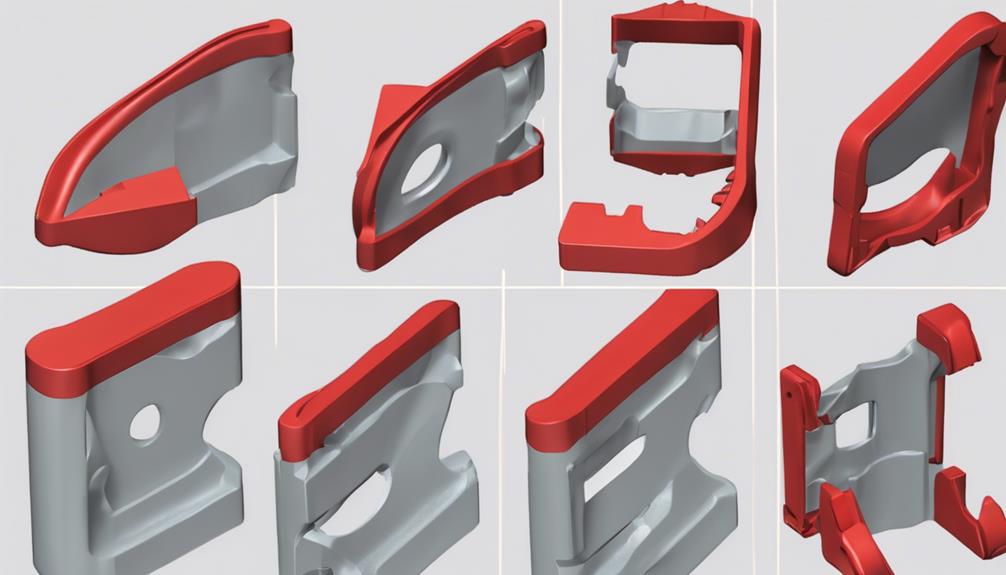
Ensuring proper draft angles in injection molding is fundamental for facilitating the smooth ejection of molded parts and minimizing production issues. A draft angle is vital in the molding process as it allows for the easy release of the part from the mold.
Typical draft angles typically range from 1 to 3 degrees for most materials used in injection molding. This tapering angle helps prevent the part from sticking to the mold and reduces the risk of damage during ejection. Insufficient draft angles can result in part distortion, scuff marks, or even part breakage during the ejection process.
Hence, it is essential to incorporate the appropriate draft angles to guarantee smooth part release and maintain high-quality molded parts. Proper draft angles play a significant role in the overall success of the injection molding process by ensuring efficient part ejection, reducing production issues, and ultimately leading to the production of flawless molded parts.
Thermoplastic Material Selection Tips
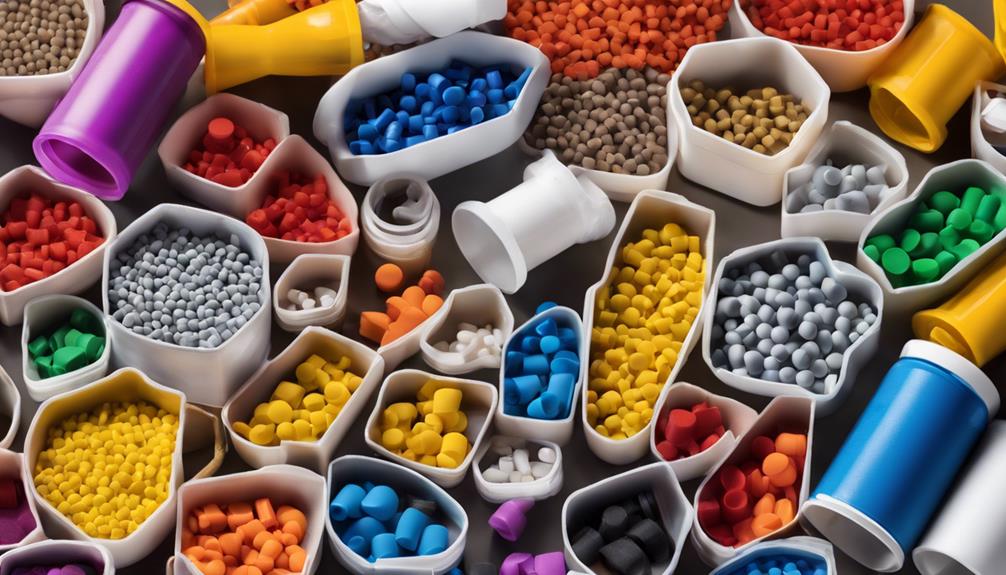
When selecting thermoplastic materials for injection molding, it is essential to carefully evaluate factors such as operational lifespan, mechanical properties, and chemical resistance. To make an informed decision, consider the following tips:
- Thermal Behavior: Understand how different thermoplastic materials interact with heat during the molding process. This knowledge guarantees that the material can withstand the required temperature and cooling cycles without compromising the final product's quality.
- Material Selection Criteria: Evaluate the mechanical properties of thermoplastic materials, including factors like tensile strength, impact resistance, and flexibility. Choose a material that aligns with the specific performance requirements of the product to secure its functionality and durability.
- Chemical Resistance: Assess the resistance of thermoplastic materials to various chemicals, solvents, and environmental factors. Opt for a material that can endure the intended operating conditions without degradation or loss of structural integrity.
Benefits of Plastic Injection Molding
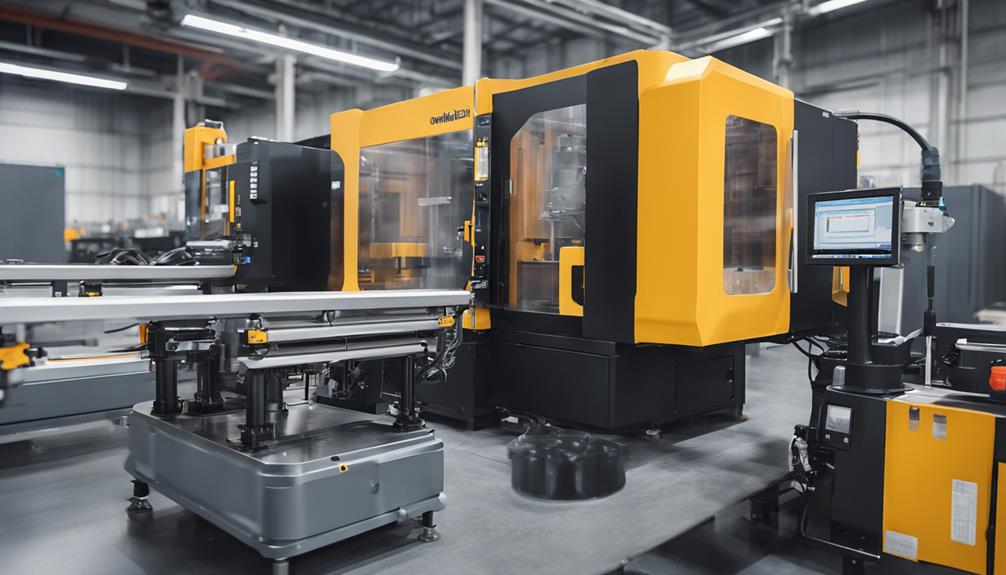
Plastic injection molding boasts benefits such as being a cost-effective manufacturing method due to its ability to produce large quantities of parts efficiently. Its high production efficiency and versatility in design capabilities make it a preferred choice for various industries seeking precision and consistency in part manufacturing.
The process's ability to create complex shapes and sizes with ease further enhances its appeal for those looking for a reliable and efficient production method.
Cost-Effective Manufacturing Method
An indispensable advantage of plastic injection molding lies in its ability to provide a cost-effective manufacturing solution for producing large quantities of parts efficiently and with minimal material wastage. This method offers several benefits:
- Efficient Production: Plastic injection molding allows for the rapid production of parts in large volumes, reducing overall manufacturing costs.
- Minimal Material Waste: The process is highly efficient, with minimal material wastage, optimizing material usage and cost-effectiveness.
- Cost Savings on Complex Designs: The ability to produce intricate and complex designs in a single operation eliminates the need for additional processes, saving both time and money.
These advantages make plastic injection molding a preferred choice for industries seeking cost-effective production methods with high-quality results.
High Production Efficiency
Achieving peak production efficiency in manufacturing processes is a critical objective for industries utilizing plastic injection molding technology. Plastic injection molding offers high production efficiency with cycle times as low as 15 seconds per part, enabling continuous production runs that can yield thousands to millions of parts.
This manufacturing process guarantees low costs by minimizing material waste and employing efficient cooling processes. The high repeatability and tight tolerances of injection molding ensure consistent quality across a wide range of production volumes. Automation further enhances efficiency by reducing labor costs.
Versatile Design Capabilities
With its advanced technological capabilities, injection molding empowers manufacturers to produce intricate and complex designs with unparalleled precision and detail. This process offers a multitude of benefits for designing and manufacturing plastic parts:
- Variety of Materials: Injection molding supports the use of a wide range of flexible plastics, allowing for versatility in material selection to meet specific design requirements.
- Incorporation of Cooling Channels: Molding machines can be designed with intricate cooling channels, enabling faster and more efficient cooling of the material during the production process.
- Precision in Final Part: The intricate design capabilities of injection molding guarantee that the final parts produced have high accuracy and detail, meeting quality standards consistently.
Frequently Asked Questions
What Are the Basics of Plastic Injection Molding?
Plastic injection molding is a manufacturing process that involves injecting molten plastic into a mold cavity to produce plastic parts with high precision. It begins with melting plastic resin pellets in a heated barrel and then injecting them into the mold to cool and solidify.
Key components such as Shot Size and Sprue determine the plastic amount required and the entry point into the mold. Cooling channels in the mold aid in efficient material cooling for consistent part quality.
What Is the Rule of Thumb for Injection Molding?
In the domain of injection molding, a cardinal principle is to adhere to a wall thickness 2-3 times the nominal thickness to deter warping and sink marks. This practice fosters structural integrity and aesthetic appeal in molded parts.
Additionally, maintaining uniform wall thickness fosters consistent cooling, minimizing cycle times. Strategic design elements like ribs comprising 50-70% of adjacent wall thickness and incorporating draft angles of 1-2 degrees per side further enhance the molding process.
Is Plastic Injection Molding Difficult?
Plastic injection molding can present challenges due to its precision requirements in tooling, material properties, and process control. Achieving desired results demands meticulous attention to parameters like temperature, pressure, and cooling.
Skilled operators and engineers play a critical role in troubleshooting issues and optimizing the process. While demanding, mastering plastic injection molding through training and experience can lead to efficient production of high-quality plastic parts.
What Are the 5 Steps of Injection Molding?
The five fundamental steps of injection molding are:
- Clamping secures the mold during high-pressure injection and cooling.
- Injection of molten plastic fills the mold cavity.
- Cooling solidifies the plastic to retain the shape.
- Ejection releases the finished product.
- Repeat the cycle to create consistent, high-quality plastic products efficiently.
Each step is essential for successful injection molding production.
Conclusion
To sum up, when evaluating plastic injection molding, it is crucial to take into account the advancements in recyclable materials and sustainable practices within the industry.
Plastic injection molding is a versatile and efficient manufacturing process that offers numerous benefits such as cost-effectiveness, high production rates, and design flexibility.
While some may argue that injection molding can lead to environmental concerns due to plastic waste, by utilizing these innovations, the environmental impact of plastic injection molding can be minimized, making it a valuable tool for producing high-quality plastic products.
